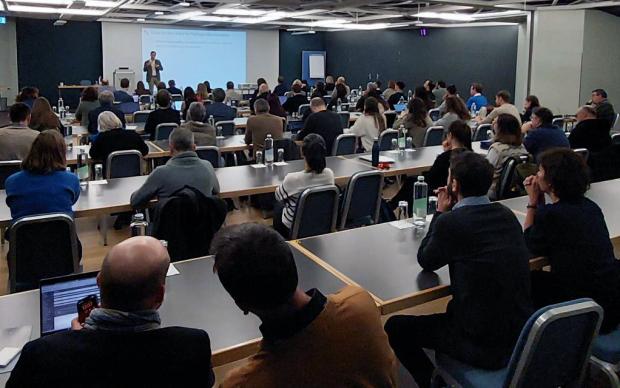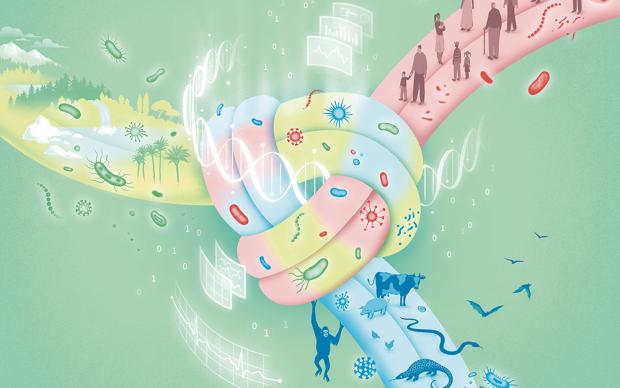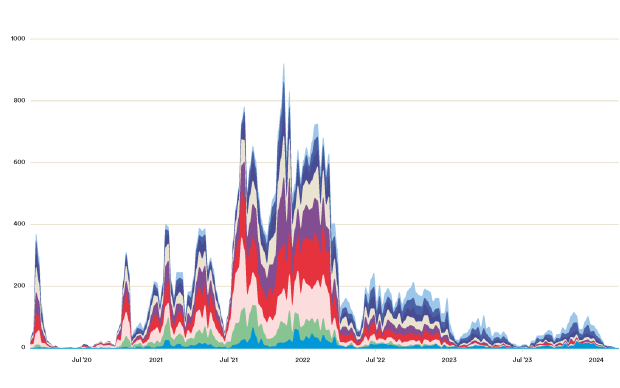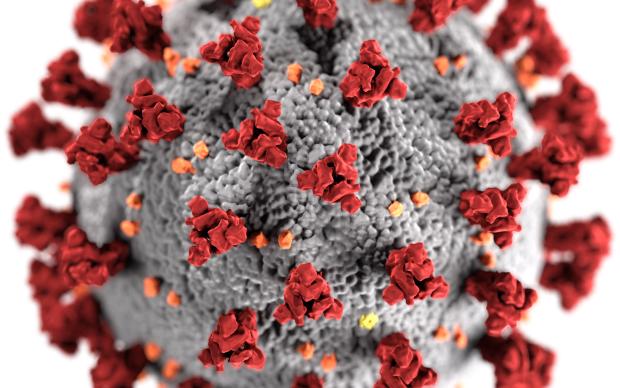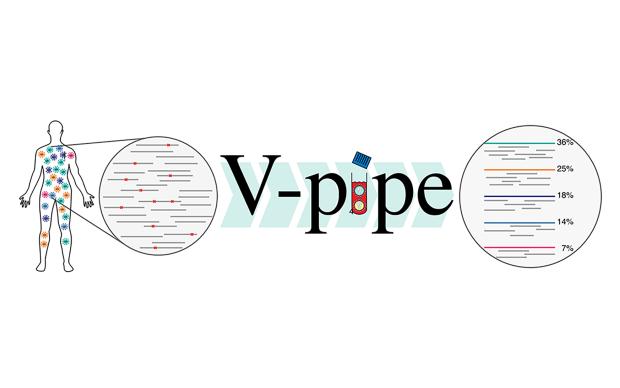The One Health concept is an interdisciplinary approach that recognizes the interconnectedness of human, animal, and environmental health. It enables scientists and clinicians to address global challenges such as zoonotic diseases, antimicrobial resistance, and ecosystem degradation, adopting a holistic, collaborative framework that integrates multiple types of data sources. Find out how resources and methods developed at SIB tackle this topic to advance knowledge on human, animal and environmental health.
Some of the major roadblocks hindering One Health projects
- Data heterogeneity: data vary in type, scope and scale, requiring harmonization
- Data paucity: data suffer from many gaps, requiring imputation or modelling
- Data quality/resolution: production technologies vary, requiring curation and standards
- Data integration: incompatibility between data requires their FAIRification
A Swiss Centre for Pathogen Bioinformatics to enhance the countrie’s capacities in sharing and analysing pathogen data
The recently launched Centre for Pathogen Bioinformatics is part of SIB’s efforts to contribute to the “One Health” approach. The Centre gathers several groups on multiple sites to continue and expand the work done by our network on SARS-CoV-2. It provides services and expertise to the Swiss federal administration and the global scientific community. This new center of competence will contribute to Switzerland staying at the forefront of research on pathogen and provide significant input in the global effort towards pandemic preparedness and response.
Learn more about the Centre of Pathogen Bioinformatics on its webpage and SIB’s role in the Pathogen Data Network initiative funded by NIH.
Among other resources linked to the Centre, the Swiss Pathogen Surveillance Platform (SPSP) co-led by SIB centralises microbial genetic sequences collected across Switzerland as a One Health data sharing platform. Following its major role during the SARS-CoV-2 the scope of the resource’s mission has expanded to include more pathogens impacting human and animal health as well as food safety for the Federal Office of Public Health and the Federal Food Safety and Veterinary Office.
Detailed information about viruses according to their host organism
The expertly curated resource ViralZone, developed at SIB’s Swiss-Prot group, includes factsheets for viruses infecting animals, plants, microorganisms, etc. This includes 64 viruses that infect humans from animals (i.e. zoonoses). These viruses are the most likely to spill over and develop human-to-human transmission before becoming endemic. This is what happened with SARS-CoV-2, most likely from bats.
Monitoring species DNA in the environment: not without the right infrastructure
Environmental DNA – or eDNA – allows researchers to detect and monitor the presence of various organisms, including pathogens, plants, animals and microbes, without the need for direct observation, for instance from water or droppings. But with sometimes very low amounts of DNA, the nature of the data requires a solid bioinformatics infrastructure (e.g. analysis pipelines and modelling approaches), such as that developed at SIB, to produce reliable results. It also relies on good-quality reference data, which is part of what the European Reference Genome (ERGA) project, chaired by SIB’s Robert Waterhouse, is set to establish.
A new resource to query scientific papers on One Health issues: filling a key gap
To address the current gap in literature libraries on ecology and environmental papers, a dedicated resource, BiodiversityPMC, was developed by the SIB Group led by Patrick Ruch, together with Plazi and the publisher Pensoft. This resource mines the literature to enable users to answer a wide range of biodiversity questions related to human health such as:
- Which evidence supports the idea that pangolins and bats interact?
- Which species are reservoir hosts to the tick?
Monitoring pathogens in Swiss wastewater: a collaborative effort
The passive monitoring of SARS-CoV-2 in wastewater is a cornerstone of the current surveillance strategy of the FOPH, in the absence of broad clinical testing. This monitoring enables early warning of the introduction of new variants, provides estimates of their spread and evaluates epidemiological characteristics, earlier than traditional clinical surveillance and at a fraction of the cost. This stream of data converges with the SPSP for their open publication on the European Nucleotide Archive according to international standards.
SIB groups involved:
- Computational Biology group (ETH Zurich), developing the SIB Resource V-pipe
- Computational Evolution group (ETH Zurich)
- Functional Genomics Center Zurich (ETH Zurich / University of Zurich)
- NEXUS Personalized Health Technologies (ETH Zurich)
Other institutions involved:
EAWAG, ETH Zurich / University of Basel, EPFL, Biosafety Laboratory (Basel-Stadt) and Microsynth AG.
Microbes have no borders: international cooperation is key
In Switzerland and internationally, there is growing recognition of the need to bring together researchers and practitioners across institutions to coordinate efforts and address environmental challenges. In addition to supporting international research, SIB is playing an active role in international initiatives related to One Health:
- SIB co-leads ELIXIR’s priority area on “Biodiversity, Food Security and Pathogens” for the Scientific Programme 2024-2028.
- SIB co-led the ELIXIR CONVERGE WP9 initiative aimed at mobilizing European SARS-CoV-2 genomic data from 20+ national genomic surveillance programmes and that plans to federate national data hubs beyond COVID-19.
- Drawing on its European coordination experience, SIB was asked to lead an NIH grant proposal for pathogen surveillance with a global impact involving 11 countries and 12 institutions.












